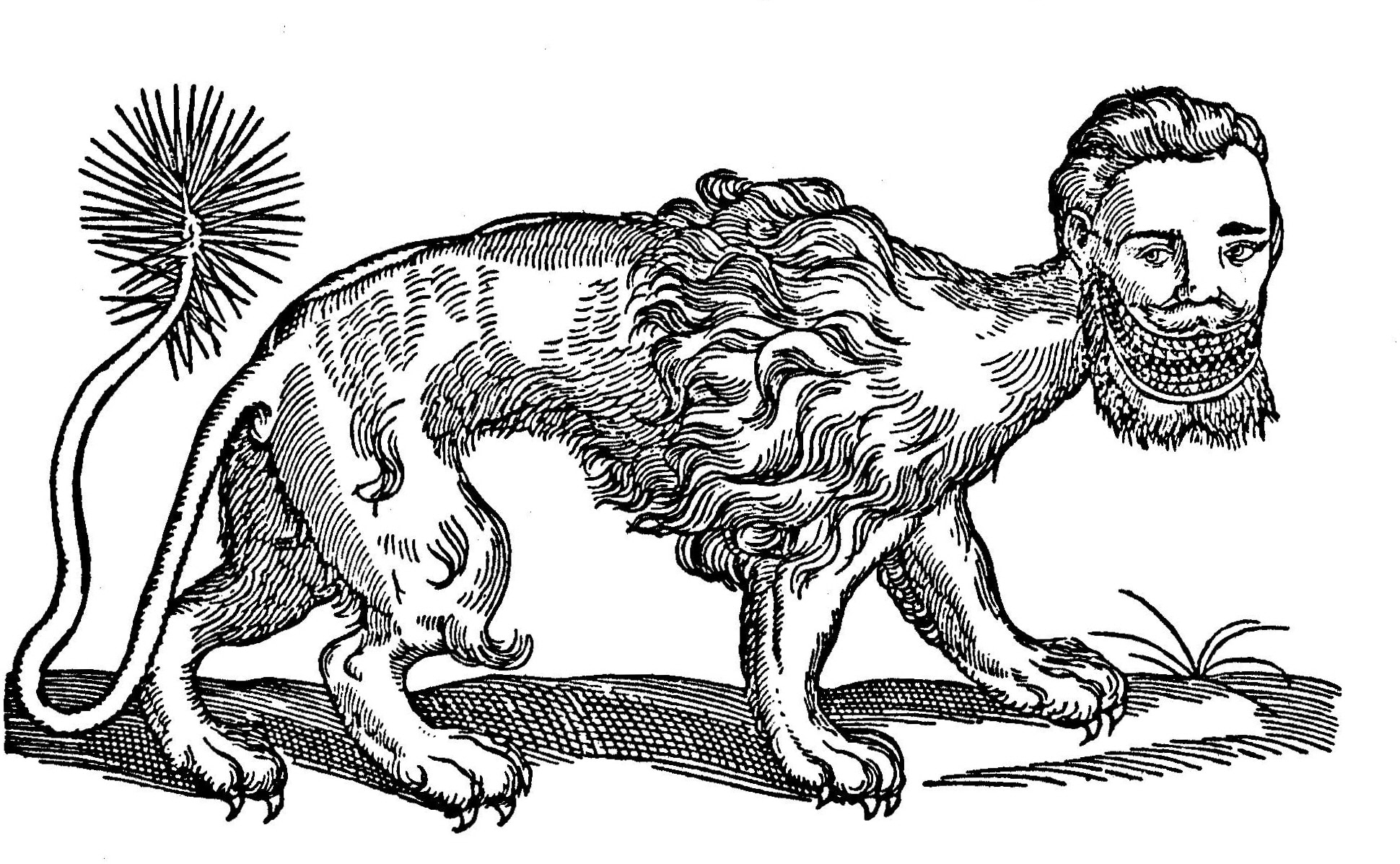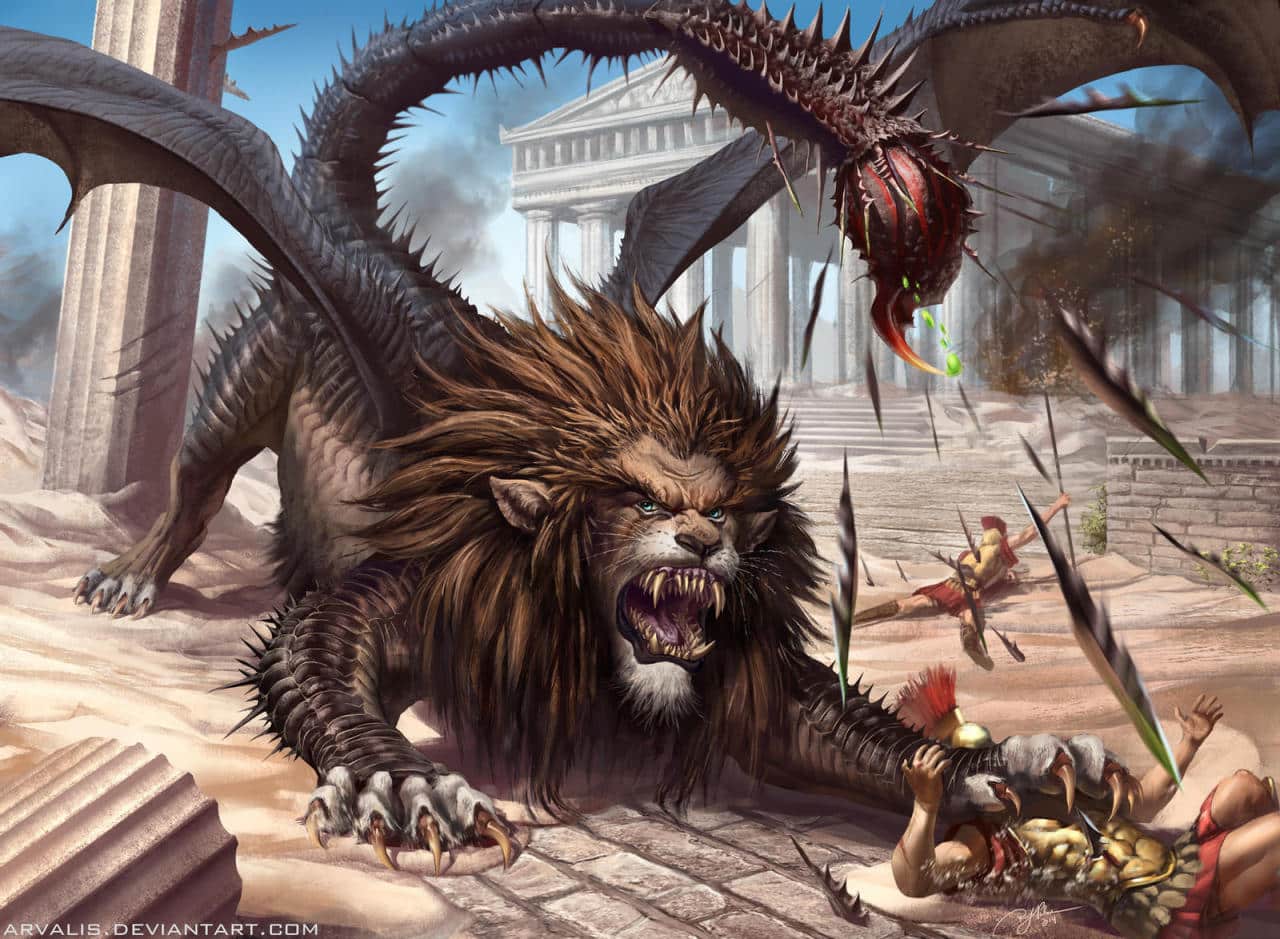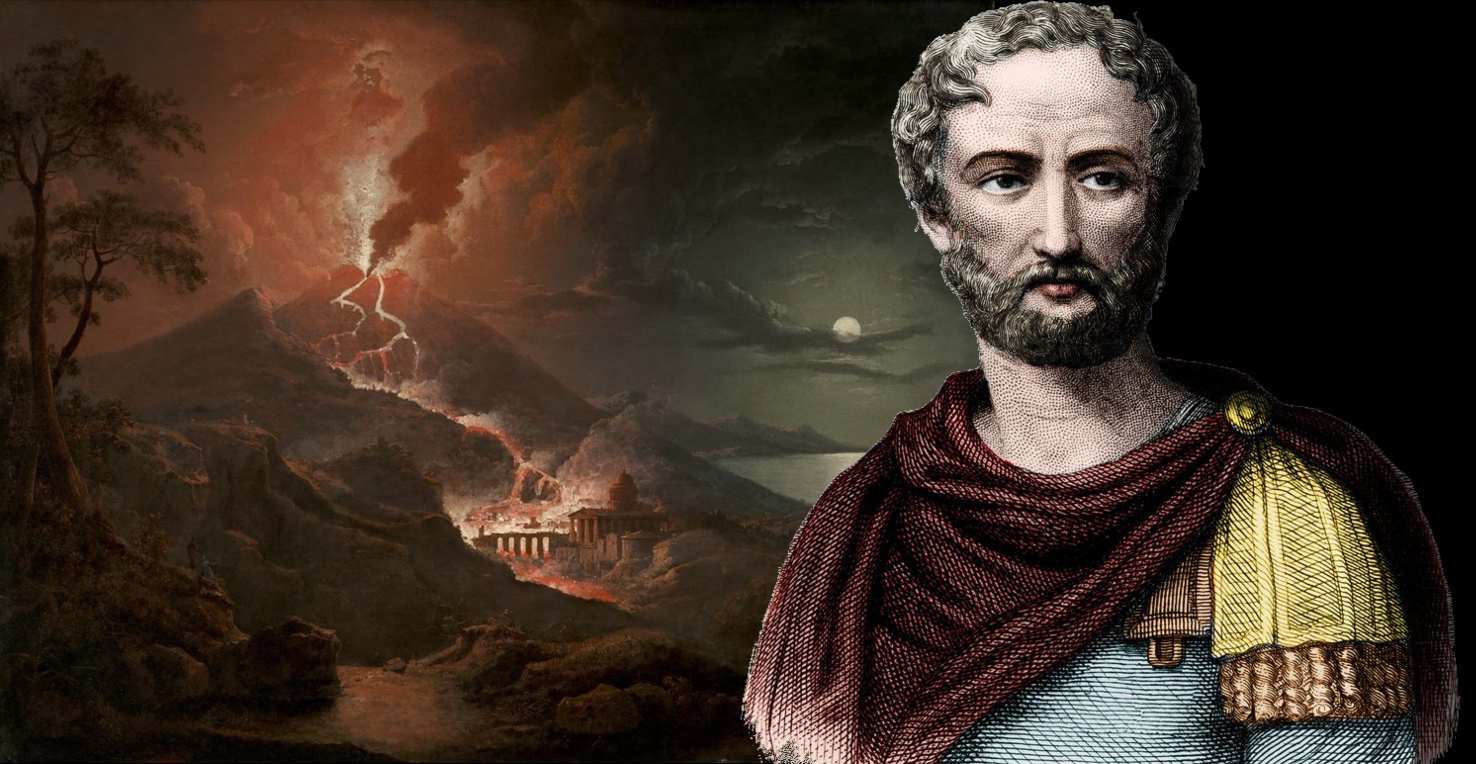
Appearance and characteristics of the Manticore
The first known mention of the manticore was left to us by the Greek historian and physician Ctesias, in his work Indicates (written in the XNUMXth century BC). Though Indicates now lost, other authors report fragments of the work of Ctesias, which allows us to have a clear description of the manticore. Recounting what Pliny the Elder writes in his Natural History:
Ctesias writes that among these same men is an animal called Mantichora who has three rows of teeth like a comb, the face and ears of a human, and bluish eyes. It is red in color with the body of a lion and a tail made of stingers like a scorpion. His voice recalls the sounds of the flute mixed with those of the trumpet and he is a creature of great speed and avid for human flesh. (8.75)
Pliny's account of the manticore influenced later writers. It seemed to give the monster a semblance of reality, since Pliny was considered, for centuries to come, a great connoisseur of animals as wonderful as they were strange.
The Manticore was famous for leaving no trace of its prey.
It was believed that the morphology of the manticore was derived from the environment in which it developed: the harsh and arid landscapes from the deserts of India and the Middle East. It needed to be fierce and have weapons at its disposal in order to capture its prey and avoid being hunted by predators. Initially hunting animals such as wild pigs and ibex, the manticore began to be drawn to villages by the cattle it hunted and inevitably began to attack and feed on humans, thus beginning its legend.
The manticore left no trace of its prey. Could attack a human up close with its sharp claws or shoot poisonous darts from its scorpion tail from a safe distance. When he fired these darts, his tail would bend back or lengthen. The Roman writer Aelian (175-235 AD) claimed that "everything it hits kills it, except elephants". Venomous stingers are described as thick as rope and a foot (30 cm) long. Each time he released a sting, another grew in its place.

With a prey I did not have enough
Manticores not only sated their appetites by killing a human being, they they chased many people at once, enjoying the hunt very much. Its preferred way of luring and hunting prey was to hide its body in the grass, so that from a distance, all humans would see was a human head. Thus deceived, people would approach the manticore and, before realizing what was happening, they would be attacked and killed. This showed how cunning and clever the manticore was. Although humans were undoubtedly its favorite prey, the manticore also hunted animals, except for the lion, which it could never overwhelm.
To keep the aggressive nature of the manticores at bay, the Indians were said to they hunted their young by breaking their tails, preventing them from growing and shoot their poisonous darts. Manticores lived in deep burrows where they could hide from predators and humans.

Origins and possible explanations
The manticore is believed to have its origins in ancient India and Persia. Some sources claim that it has its roots in ancient Persian mythology, while others argue that it is an Indian creature. According to Aelian in his animal characteristics, who are "Ctesias claims to have seen such a creature brought to the Persian king as a gift.» (4.21). Other writers support this claim, saying however that although Ctesias first saw the creature in Persia, it was originally from India. It is perhaps correct, therefore, to say that it originated in Persian literature, but was later presented as a creature of Indian mythology.
Although Pliny the Elder accepted the existence of the manticore as a fact, or so it seems in his Natural History, some of his fellow writers were not afraid to dismiss the creature as pure nonsense, suggesting that what Ctesias saw was another animal. For example, in your Description of Greece, the Greek historian and geographer Pausanias compares the manticore to a tiger and tries to give a rational explanation of its origins:
In Ctesias' account, in India there is a beast called martichora by the Indians and 'man eater' by the Greeks, but I think it refers to the tiger. It has three rows of teeth on each arch and a stinger at the tip of its tail. He defends himself with these spikes in close combat and then discharges them like an archer's arrow when fighting at a distance. I think excessive fear of the beast has led the Indians to have the wrong idea about it. (9.21.4)
Flavius Philostratus and Aristotle
In the II century AD. C., the Greek writer Flavius Philostratus (c. 170-245 AD) claimed that the manticore was a "frottola", that is, profane, meaningless music ( Life of Apollonius of Tyana .
Aristotle (384-322 BC), who along with Pliny the Elder was also considered a great authority during the Middle Ages, denied the existence of hybrid creatures. He pointed out that such different animals could not have successfully reproduced. However, this did not discourage the rise in popularity of hybrid monsters that continued to appear in art and literature.
Bartholomew Anglico and Brunetto Latino
In the thirteenth century, a Parisian scholastic, Bartholomew Anglico, compared the manticore to a bear and placed it in India in his De proprietatibus rerum (About the order of things). The Italian scholar Brunetto Latino classified it with other carnivorous creatures such as the wolf and the hyena in his encyclopedia Livres dou Trésor (treasure book).
The manticore's prominent teeth and strange call caused some classical and modern writers to compare it to the african hyena. While its long tail and speed suggested it looked more like a cheetah. His fearsome nature and his love of human flesh may have simply represented fear of the unknown and strange.

Representations
During the Middle Ages, the manticore was a fixture in bestiaries. often appeared as decoration in medieval cathedrals, symbolizing Jeremiah, the Jewish prophet who warned of doom. In the XNUMXth century, manticores were also used in heraldry; however, this trend did not last long as they were thought to represent evil, an idea that had become widespread during medieval times.
Depictions of the manticore can be found on the Hereford Map (a medieval map of the known world), where it is shown facing off against a tiger.
King Arthur
In Runkelstein Castle (located in Tirol) there is a fresco depicting one of King Arthur's knights facing a manticore and another animal (a lion or a leopard). In the story of four-legged beasts By Edward Topsell (1572-1625), the description of the manticore is accompanied by a woodcut where its terrible teeth can be clearly seen.
During the 336th and 323th centuries, the manticore is mentioned in several romances about Alexander the Great (r. XNUMX-XNUMX BC), in which he attacks the Macedonian army with other terrible creatures.
Also in literature...
Manticores are certainly not missing from even the most modern fantasy books and games. The manticore can be found in the first edition of Dungeons and Dragons (1974) and in the collectible card game Magic: The Gathering (1993)
In the Rick Riordon book series Percy Jackson and the Olympian Gods, Dr. Thorn, the adversary of the hero Percy Jackson, can transform into a manticore equipped with a scorpion tail. Nobel Prize winner Salman Rushdie introduces the manticore in the opening chapter of his famous The Satanic Verses (1988)
The manticore also appears in the much loved series of Harry Potter by JK Rowling. In Harry Potter and the Prisoner of Azkaban(2004), the main characters read about a manticore that has been killing people. Meanwhile in Harry Potter and the Goblet of Fire (2005), Hagrid crosses a manticore with a fire crab to create a new animal species called the skrewt.
Interestingly, not all fantasy manticores have been portrayed as wild beasts: in E. Nesbit's novel The Book of Dragons, one of the young heroes helps a fearful and meek manticore escape from a bestiary.